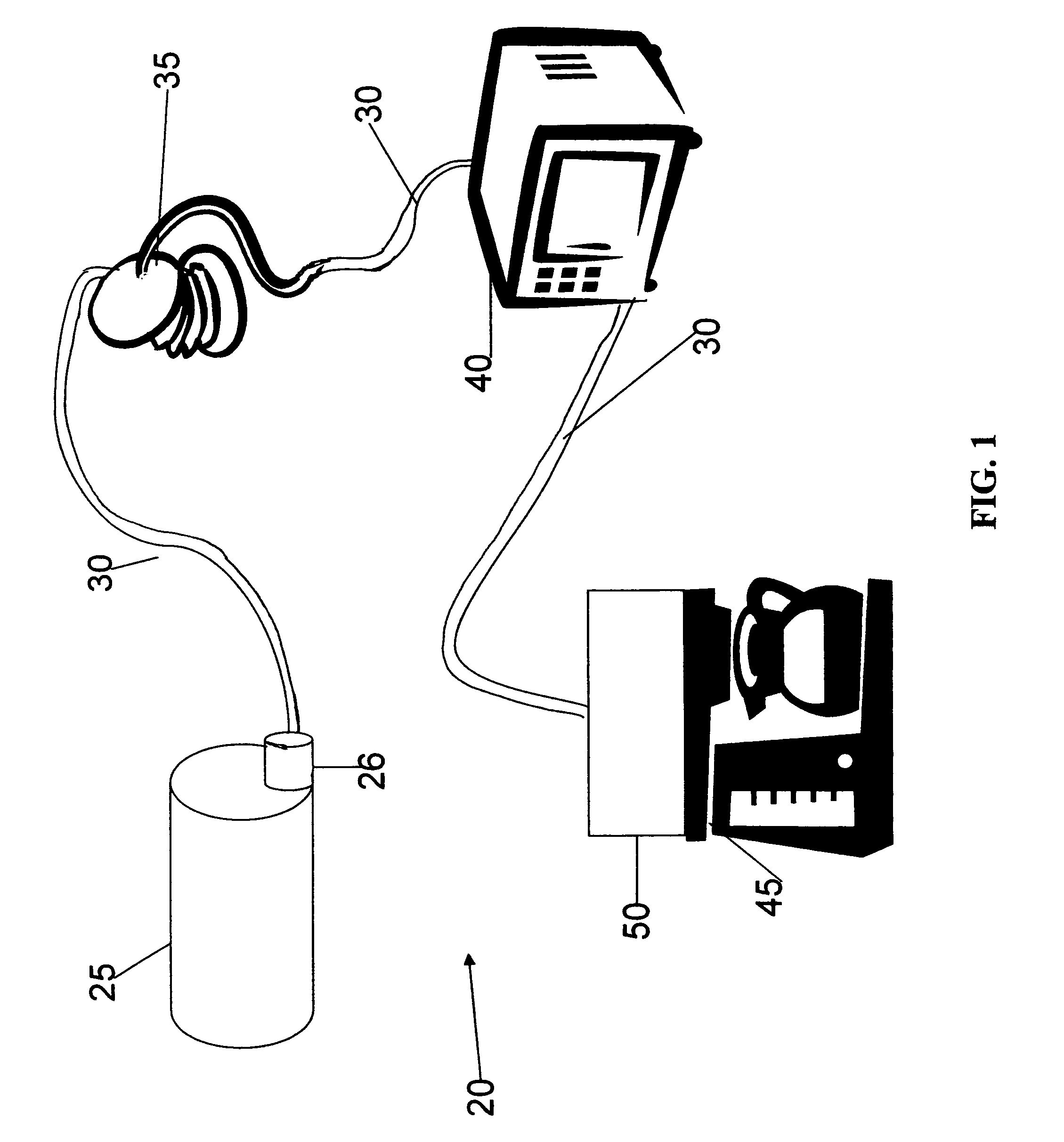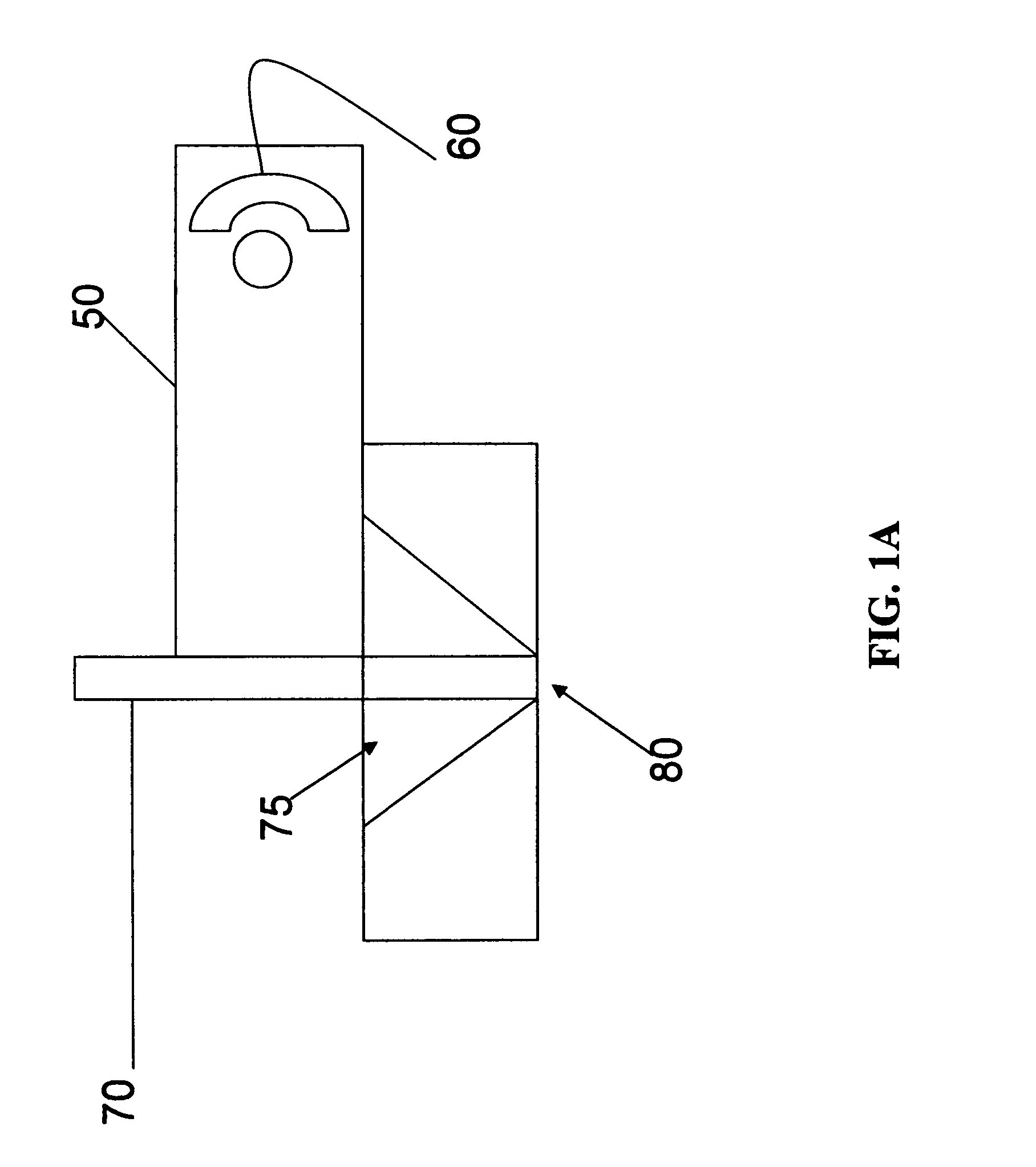Method and apparatus for heating and aseptic dispensing of sterile product
- Summary
- Abstract
- Description
- Claims
- Application Information
AI Technical Summary
Benefits of technology
Problems solved by technology
Method used
Image
Examples
example one
[0098]The peristaltic pump (600 ml / min) pumps for 20 seconds to fill the microwave cavity with 200 milliliters of aseptic milk at ambient temperature (25° C.). The milk is contained in a coil of plastic tubing and positioned in the cavity to maximize the absorption of microwave energy. The microwave is energized to deliver an initial absorbed energy sufficient to heat the milk from ambient to near boiling or the desired temperature. The peristaltic pump is energized for 20 seconds to replenish the cavity and flush the heated milk through the dispensing port.
example two
[0099]The peristaltic pump (600 ml / min) pumps for 20 seconds to fill the microwave cavity with 200 milliliters of aseptic milk at ambient temperature (25° C.). The milk is contained in a coil of plastic tubing and positioned in the cavity to maximize the absorption of microwave energy. The microwave is energized to deliver an initial absorbed energy sufficient to heat the milk from ambient to near boiling. The microwave continues to supply energy to the cavity until the vapor pressure of the water in the milk exceeded the ambient pressure pushing the boiling milk through the dispensing port. The microwave ceases operation when the milk is emptied from the chamber and the coil in the microwave cavity begins to cool. Sterile air supplied to the dispensing port is at a greater pressure and thus fills the tubing with sterile air preventing bacterial contamination with airborne bacteria
example three
[0100]The peristaltic pump (600 ml / min) pumps for 20 seconds to fill the microwave cavity with 200 milliliters of aseptic milk at ambient temperature (25° C.). The milk is contained in a coil of plastic tubing and positioned in the cavity to maximize the absorption of microwave energy. The microwave is energized to deliver an initial absorbed energy sufficient to heat the milk from ambient to near boiling. The microwave continues to supply energy to the cavity until the vapor pressure of the water in the milk exceeds the ambient pressure pushing the boiling milk through the dispensing port. As the boiling milk exits the dispensing port, additional sterile air or steam is added to the flow to incorporate bubbles or frothing the liquid.
PUM
 Login to View More
Login to View More Abstract
Description
Claims
Application Information
 Login to View More
Login to View More - R&D
- Intellectual Property
- Life Sciences
- Materials
- Tech Scout
- Unparalleled Data Quality
- Higher Quality Content
- 60% Fewer Hallucinations
Browse by: Latest US Patents, China's latest patents, Technical Efficacy Thesaurus, Application Domain, Technology Topic, Popular Technical Reports.
© 2025 PatSnap. All rights reserved.Legal|Privacy policy|Modern Slavery Act Transparency Statement|Sitemap|About US| Contact US: help@patsnap.com



